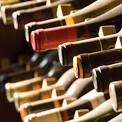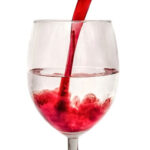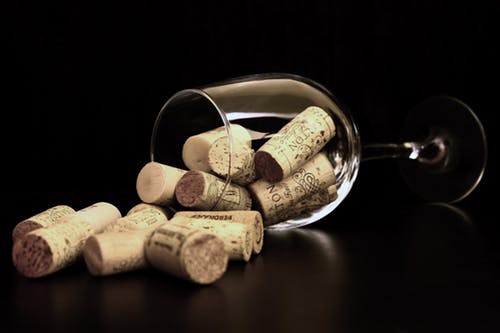Okay, “test wine” doesn’t sound as much fun as “taste wine” to me. Anyway, if wine is fake or counterfeit (synthetic, or powdered), first let’s figure out what “fake wine” means. Fake wine normally consists of tannins, glycerin, and sugar to reproduce the texture in the mouth of wine, several aromatic compounds for aromas and flavors, ethanol, and, finally, 85% pure water.
Whether you’re a self-proclaimed wine enthusiast or just enjoy sipping wine casually at home, you want to buy what you believe you’re buying. However, following a new report, a significant amount of wine sold globally is NOT natural. Thus, according to a recent report from Business Insider, approximately 20% of wine sold worldwide is not naturally produced. For example, they refer to a cheap Sicilian wine that appeared to be an expensive wine priced at around $300 per bottle. In a Milan warehouse, over 40 cases of it were ready for shipment to Asia and Russia. So are there accessible ways to determine wine authenticity?
If, after you bring the wine home from the store, you have doubts about its quality and naturalness, there are as many as 4 reliable ways to find it out. Say you may be alerted by how your wine tastes or smells, then you can try one of the tricks that they suggest.
Four ways to test wine
1. Soda
For this test, pour a little (10 grams) of wine into a clear glass, then add a little bit of ordinary baking soda to the glass. If the wine has changed color (acquired a gray-green-bluish hue), then it is real. Grape (fruit) starch reacts with soda and changes color. Adding ordinary baking soda to natural wine will change its color. This would be due to a reaction with grape starch. Synthetic wine on the other hand will not retain its color.
2. Glycerin
To find out if you have powdered wine, just add a couple of drops of glycerin to it. In natural wine, these drops will simply sink to the bottom and retain their color. If glycerin changes its color to yellow or red, then the wine is powdered and thus not natural.
3. Chalk
You can use this test to determine if your wine contains any dyes. Just drop some wine on a piece of chalk. If the dried spot has lightened, the wine is dye-free. If the stain changes its color, there the wine contains dyes in it.
4. Stirring
This is a great way to assess the quality of the wine. Upon shaking the bottle, Of quality wine, the foam will gather centrally and will quickly fall off. In bad wine, the foam will gather around the edges and settle slowly.
Test wine visually

Manufacturers will use whatever tricks they can to make their product look like a good wine. There are a lot of options to fake the wine: powdered wine, scheelite (with the addition of glycerin), may contain alkaline additives, or a blend of different dyed wines. It is sometimes not easy to find a bottle of authentic, real wine among all of them.
First things first, it all starts in the store. In this case, the price would not be a huge indicator because “bad” wine may have the label of a reliable wine manufacturer. You need to pay attention to the visual details, and you will avoid falling for such tricks and will not need to test your wine.
Bottle
First and foremost. Remember, good wine is never packed in paper bags, only powdered “wine” is. Authentic wine only comes with glass bottles.
Label
Then, have a close look at the wine label before you buy. The wine label should be flawless if it is an expensive, well-known brand of wine. Respectable manufacturers never save on this attribute. There should be no peeled edges, floating inscriptions, and traces of glue. If you notice any of these, most likely, there’s fake wine inside that bottle. Additionally, the stamped manufacturing date will stand separately from the primary information on the label. All fonts must be clear and contain no typos or print defects. The labels on the label and the cork will match.
Cork
You can’t inspect the wine stopper in the store, of course, but you want to pay attention to it at home. The length of the cork is not an indicator of wine quality. Well-aged wine normally has longer corks, and younger wines have shorter ones. Of most importance however is the cork’s material. Good wine would not have a plastic stopper. No. Fine wine will have a cork that smells of berries but by no means of mold and dampness. The quality of the cork may differ from bottle to bottle, but it should not crumble. If the cork crumbles under the corkscrew, then it is a bad sign. Again, reputable manufacturers would not allow this to happen.
And last but not least… Wine is one of the products that cannot be produced all year round. This is a seasonal product. Therefore, if the year is lean and the grape harvest is low, then of course there will be not much wine made in a specific vineyard. The wine from a genuine producer may run out fast, unlike some producers who “cook” it all year long from wine powders.
No-hassle Fine Wine experience
Well, the Trial and Error method can certainly work well to find out if the wine you’ve purchased at your local store is good or bad. But would it be worth your time and disappointment in case of failed tests? I wouldn’t allow this to happen to me because I want my fine wine to: (a) be naturally produced; (b) taste naturally delicious and come from the best wine-producing regions of the world such as the Napa and Sonoma Valleys of California, and always be delivered right to my door. This also ensures that the fine wine I give as gifts to my friends is of highest quality and lowest possible cost because it ships from our warehouse directly to consumer. No stores or middlemen on the way. This is why I order 4 bottles of it from our International Wine Club monthly and enjoy them confidently.
You can do it also and why not start on your superior wine experience NOW!!



